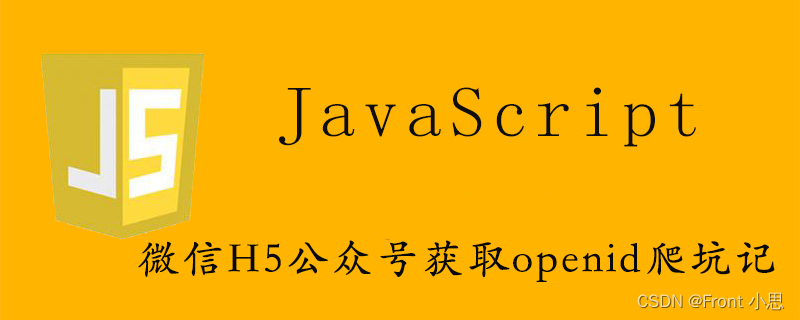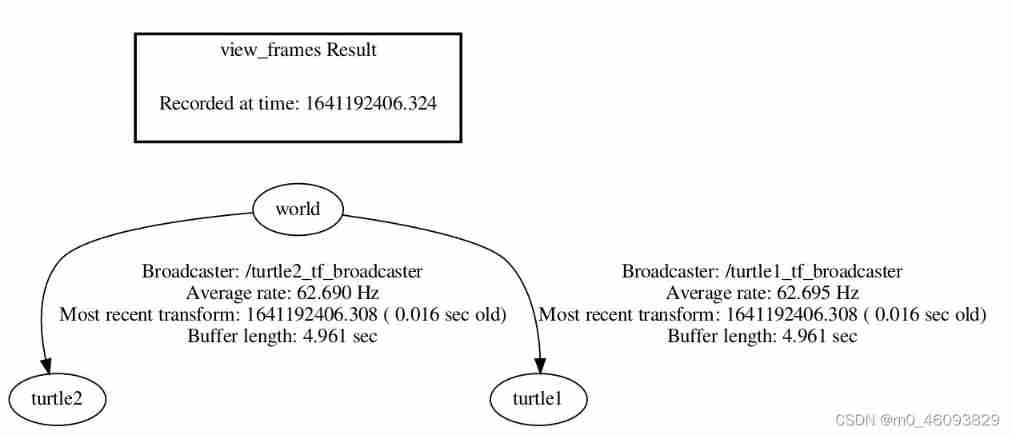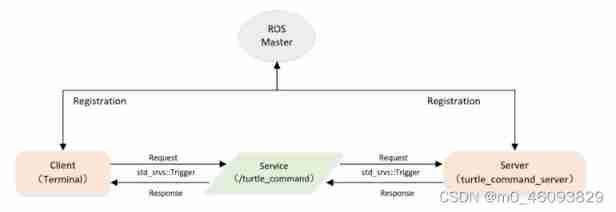当前位置:网站首页>[code practice] [stereo matching series] Classic ad census: (4) cross domain cost aggregation
[code practice] [stereo matching series] Classic ad census: (4) cross domain cost aggregation
2022-07-05 08:53:00 【Li Yingsong~】
Sorry to keep you waiting !
Download the complete source code , Click to enter : https://github.com/ethan-li-coding/AD-Census
Welcome to Github Discuss in the project !
Part 1 Cost calculation in , I've brought you an in-depth understanding ADCensusStereo Implementation code of cost calculation step , Experiments are done to show the results of the algorithm . Here is the experimental result of cost calculation :
 |  |  |
As mentioned at the end of the previous article ,AD-Census The cost calculation method of AD and Census Advantages of matching strategy , Is an excellent strategy .
And in any case , The result of cost calculation cannot be regarded as the final parallax result , The next optimization steps are right ADCensus Is an indispensable step . This article introduces the first optimization step : Cost aggregation based on cross domain Code implementation of .
List of articles
Algorithm
Please see the blog for the principle of Algorithm :
classic AD-Census: (2) Cross domain cost aggregation (Cross-based Cost Aggregation)
I won't repeat , So as not to make a fuss .
Code implementation
Class design
Member functions
I write the cross domain cost aggregation as a class CrossAggregator, Put it in the file cross_aggregator.h/cross_aggregator.cpp in .
/** * \brief Cross domain cost aggregator */
class CrossAggregator {
public:
CrossAggregator();
~CrossAggregator();
}
We need to CrossAggregator Class to design some public interfaces , Thus, they can be called to achieve the purpose of cost aggregation .
We use Cost calculator design The idea of .
The first interface is Initialization function Initialize , Do some preparatory work for cost aggregation , For example, a very important point is that I need to open up a memory to store the cross arm data of each pixel , For later aggregation .
The second type of interface is essential Set up the data SetData as well as Set parameters SetParam , Away from data and parameters , Algorithm is nothing .
The third is the key interface Aggregate 了 , Finally, we need to call it to complete the cost aggregation .
The last two additional interfaces are get_arms_ptr and get_cost_ptr, The former gets the array of cross arms , This is purely because the post-processing step requires ; The latter is to obtain the aggregated cost data pointer , It is very important , Because the following scan line optimization steps need it .
Let's take a look at the final class interface design :
/** * \brief Initialize the cost aggregator * \param width The image is wide * \param height Image height * \return true: Successful initialization */
bool Initialize(const sint32& width, const sint32& height, const sint32& min_disparity, const sint32& max_disparity);
/** * \brief Set the data of the cost aggregator * \param img_left // Left image data , Three channels * \param img_right // Right image data , Three channels * \param cost_init // Initial cost array */
void SetData(const uint8* img_left, const uint8* img_right, const float32* cost_init);
/** * \brief Set the parameters of the cost aggregator * \param cross_L1 // L1 * \param cross_L2 // L2 * \param cross_t1 // t1 * \param cross_t2 // t2 */
void SetParams(const sint32& cross_L1, const sint32& cross_L2, const sint32& cross_t1, const sint32& cross_t2);
/** \brief polymerization */
void Aggregate(const sint32& num_iters);
/** \brief Get the cross arm data pointer of all pixels */
CrossArm* get_arms_ptr();
/** \brief Get aggregate cost array pointer */
float32* get_cost_ptr();
The above interface is all public functions of the class , The caller can call . The parameter meaning of the specific interface , The notes are very clear , Just look at each other .
One thing to mention is ,get_arms_ptr Type of function scope CrossArm, It is my customized cross arm structure , Save the length of the upper, lower, left and right arms of the pixel . As shown below :
/** * \brief Cross arm structure * To limit memory usage , The arm length type is set to uint8, This means that the maximum arm length cannot exceed 255 */
struct CrossArm {
uint8 left, right, top, bottom;
CrossArm() : left(0), right(0), top(0), bottom(0) {
}
};
In order to complete the cost aggregation , We need some sub steps , They include :
- Build a cross arm
- Calculate the number of pixels in the support area of pixels
- The cost of aggregating all pixels at a fixed parallax
They are designed as private member functions of classes :
/** \brief Build a cross arm */
void BuildArms();
/** \brief Search the horizontal arm */
void FindHorizontalArm(const sint32& x, const sint32& y, uint8& left, uint8& right) const;
/** \brief Search for vertical arms */
void FindVerticalArm(const sint32& x, const sint32& y, uint8& top, uint8& bottom) const;
/** \brief Calculate the number of pixels in the support area of pixels */
void ComputeSupPixelCount();
/** \brief Aggregate a certain parallax */
void AggregateInArms(const sint32& disparity, const bool& horizontal_first);
In aggregate function Aggregate in , These private functions are called in turn to complete the cost aggregation .
Member variables
Finally, the indispensable member variables of the member function class , Such as image size 、 Cross arm data ( Left image )、 Image data 、 Cost data 、 Algorithm parameters, etc , It is they that always maintain the value required by the algorithm within the scope of the class , In order to achieve the final calculation purpose . You have to protect them with private types , For internal use of classes only , Let's see !
/** \brief Image size */
sint32 width_;
sint32 height_;
/** \brief Cross arms */
vector<CrossArm> vec_cross_arms_;
/** \brief Image data */
const uint8* img_left_;
const uint8* img_right_;
/** \brief Initial cost array pointer */
const float32* cost_init_;
/** \brief Aggregate cost array */
vector<float32> cost_aggr_;
/** \brief Temporary cost data */
vector<float32> vec_cost_tmp_[2];
/** \brief Support area pixel number array 0: Horizontal arm is preferred 1: Vertical arm is preferred */
vector<uint16> vec_sup_count_[2];
vector<uint16> vec_sup_count_tmp_;
sint32 cross_L1_; // Spatial domain parameters of cross window :L1
sint32 cross_L2_; // Spatial domain parameters of cross window :L2
sint32 cross_t1_; // Cross window color field parameters :t1
sint32 cross_t2_; // Cross window color field parameters :t2
sint32 min_disparity_; // Minimum parallax
sint32 max_disparity_; // Maximum parallax
/** \brief Flag indicating whether the initialization was successful */
bool is_initialized_;
Explain , In a member variable , Our initial cost data cost_init_ It is pointer type , Because it is the data returned by the cost calculator directly , And aggregate cost data cost_aggr_ yes vector Containers , It will open up memory in the initialization function of this class , And exist in the whole life cycle of the cost aggregator , Will be through the interface get_cost_ptr Output its address , Use for subsequent steps .
Class implementation
Let's first look at the cost aggregator class CrossAggregator Implementation of initialization function :
bool CrossAggregator::Initialize(const sint32& width, const sint32& height, const sint32& min_disparity, const sint32& max_disparity)
{
width_ = width;
height_ = height;
min_disparity_ = min_disparity;
max_disparity_ = max_disparity;
const sint32 img_size = width_ * height_;
const sint32 disp_range = max_disparity_ - min_disparity_;
if (img_size <= 0 || disp_range <= 0) {
is_initialized_ = false;
return is_initialized_;
}
// Allocate memory for the cross arm array
vec_cross_arms_.clear();
vec_cross_arms_.resize(img_size);
// Allocate memory for the temporary cost array
vec_cost_tmp_[0].clear();
vec_cost_tmp_[0].resize(img_size);
vec_cost_tmp_[1].clear();
vec_cost_tmp_[1].resize(img_size);
// Allocate memory for the array that stores the number of pixels in each pixel support area
vec_sup_count_[0].clear();
vec_sup_count_[0].resize(img_size);
vec_sup_count_[1].clear();
vec_sup_count_[1].resize(img_size);
vec_sup_count_tmp_.clear();
vec_sup_count_tmp_.resize(img_size);
// Allocate memory for the aggregate cost array
cost_aggr_.resize(img_size * disp_range);
is_initialized_ = !vec_cross_arms_.empty() && !vec_cost_tmp_[0].empty() && !vec_cost_tmp_[1].empty()
&& !vec_sup_count_[0].empty() && !vec_sup_count_[1].empty()
&& !vec_sup_count_tmp_.empty() && !cost_aggr_.empty();
return is_initialized_;
}
There is no need to say more about the previous variable assignment , The main task of initialization is to allocate memory for the cross arm array , Allocate memory for the temporary cost array , And allocate memory for the array storing the number of pixels in each pixel support area .( If you understand the algorithm theory , Then these operations should not be difficult to understand , All for the final calculation of the cost after aggregation ). Besides , The memory of the aggregate cost array is also opened here , And maintained by this class for life .( Maintain the results calculated by yourself , be perfectly logical and reasonable !)
After initialization ,SetData and SetParam Functions are easy to understand , I won't take up space .
When the above preparations are done , We begin to realize the function of cost aggregation .
We can see from the principle that , To complete the cost aggregation , We have to go through two steps :
- Build aggregation areas , That is to build a cross arm
- Perform aggregation
We know that for every pixel , Both have arms in two directions , A horizontal arm , A vertical arm , The constraints of the construction arm are exactly the same , It is divided into distance constraints and color constraints , Simply put, the distance cannot exceed the set threshold , The color difference cannot exceed the set threshold . This is done so that the pixels in the pixel aggregation area are close to their parallax .AD-Census Although it is not simple to calculate the distance and color difference between the pixel and the central pixel in the process of arm extension , But it's not complicated , Just calculate the distance and color difference from the previous pixel in one extension direction , Make the structure more robust . Specific implementation principle , Please read the blog :
I wrote two functions to construct horizontal arm and vertical arm respectively , In fact, except in different directions , The construction method and parameters are the same . Only pixels are posted here ( x , y ) (x,y) (x,y) Construction code of horizontal arm :
void CrossAggregator::FindHorizontalArm(const sint32& x, const sint32& y, uint8& left, uint8& right) const
{
// Pixel data address
const auto img0 = img_left_ + y * width_ * 3 + 3 * x;
// Pixel color value
const ADColor color0(img0[0], img0[1], img0[2]);
left = right = 0;
// Calculate the left and right arms , First left arm then right arm
sint32 dir = -1;
for (sint32 k = 0; k < 2; k++) {
// Extend the arm until the condition is not met
// The arm length shall not exceed cross_L1
auto img = img0 + dir * 3;
auto color_last = color0;
sint32 xn = x + dir;
for (sint32 n = 0; n < std::min(cross_L1_, MAX_ARM_LENGTH); n++) {
// Boundary treatment
if (k == 0) {
if (xn < 0) {
break;
}
}
else {
if (xn == width_) {
break;
}
}
// Get color value
const ADColor color(img[0], img[1], img[2]);
// Color distance 1( The color distance between the pixel on the arm and the calculated pixel )
const sint32 color_dist1 = ColorDist(color, color0);
if (color_dist1 >= cross_t1_) {
break;
}
// Color distance 2( The color distance between the pixel on the arm and the previous pixel )
if (n > 0) {
const sint32 color_dist2 = ColorDist(color, color_last);
if (color_dist2 >= cross_t1_) {
break;
}
}
// Arm length greater than L2 after , The color distance threshold is reduced to t2
if (n + 1 > cross_L2_) {
if (color_dist1 >= cross_t2_) {
break;
}
}
if (k == 0) {
left++;
}
else {
right++;
}
color_last = color;
xn += dir;
img += dir * 3;
}
dir = -dir;
}
}
Find out which two pixels are involved in the distance calculation, and you will almost understand . One is the distance between the new pixel and the central pixel in the process of arm extension ; The second is the distance between the new pixel and the previous pixel .
The construction method of the vertical arm is the same as that of the horizontal arm , It's just in different directions .
Next , We need to calculate the support area of each pixel ( The area covered by the cross arm ) The number of pixels . Why this step ? The reason is that we learned in the principle section , Cost aggregation is to accumulate the cost value of the support area , Divide by the number of pixels in the support area , That is, calculate the average cost of the support area , The generation value assigned to the central pixel .
meanwhile , What we must note is , Different aggregation directions , Support areas are not the same , That is, the aggregation direction of first horizontal and then vertical and the aggregation direction of first vertical and then horizontal , The support areas of the two are different . Therefore, you need to use arrays in two directions to save the number of pixels in the support area . So let's look at the code :
void CrossAggregator::ComputeSupPixelCount()
{
// Calculate the number of pixels in the support area of each pixel
// Be careful : Two different polymerization directions , The pixels in the support area of pixels are different , It needs to be calculated separately
bool horizontal_first = true;
for (sint32 n = 0; n < 2; n++) {
// n=0 : horizontal_first; n=1 : vertical_first
const sint32 id = horizontal_first ? 0 : 1;
for (sint32 k = 0; k < 2; k++) {
// k=0 : pass1; k=1 : pass2
for (sint32 y = 0; y < height_; y++) {
for (sint32 x = 0; x < width_; x++) {
// obtain arm The number
auto& arm = vec_cross_arms_[y*width_ + x];
sint32 count = 0;
if (horizontal_first) {
if (k == 0) {
// horizontal
for (sint32 t = -arm.left; t <= arm.right; t++) {
count++;
}
}
else {
// vertical
for (sint32 t = -arm.top; t <= arm.bottom; t++) {
count += vec_sup_count_tmp_[(y + t)*width_ + x];
}
}
}
else {
if (k == 0) {
// vertical
for (sint32 t = -arm.top; t <= arm.bottom; t++) {
count++;
}
}
else {
// horizontal
for (sint32 t = -arm.left; t <= arm.right; t++) {
count += vec_sup_count_tmp_[y*width_ + x + t];
}
}
}
if (k == 0) {
vec_sup_count_tmp_[y*width_ + x] = count;
}
else {
vec_sup_count_[id][y*width_ + x] = count;
}
}
}
}
horizontal_first = !horizontal_first;
}
}
In the process of calculation , We calculate the number of pixels in the support area by simulating the process of constructing the support area , That is, as stated in the original , First count the number of pixels in the support area in one direction , Stored in a temporary array , Then accumulate the stored values in the temporary array along the arm in the other direction . Because the support areas of the two tectonic directions are different , therefore vec_sup_count_ It's a capacity of 2 Array of , The number of each pixel support area in two construction directions is saved respectively .
Last , We can perform iterative aggregation , The number of iterations is passed in as a parameter , We use one for Loop to complete the iteration , Every iteration , We will convert the construction order of the support area ( Even iterations are constructed horizontally and then vertically , Odd times are constructed vertically and then horizontally ). Then, the algorithm will evaluate each parallax under the candidate parallax d d d Perform independent full graph aggregation ( parallax d 1 d_1 d1 And parallax d 2 d_2 d2 The cost aggregation between is completely independent , Can be highly parallel ).
Let's first look at single parallax d d d Aggregate code implementation under :
void CrossAggregator::AggregateInArms(const sint32& disparity, const bool& horizontal_first)
{
// This function aggregates all pixels when the parallax is disparity The price of
if (disparity < min_disparity_ || disparity >= max_disparity_) {
return;
}
const auto disp = disparity - min_disparity_;
const sint32 disp_range = max_disparity_ - min_disparity_;
if (disp_range <= 0) {
return;
}
// take disp The cost of layer is stored in the temporary array vec_cost_tmp_[0]
// This can avoid too many visits to larger cost_aggr_, Improve access efficiency
for (sint32 y = 0; y < height_; y++) {
for (sint32 x = 0; x < width_; x++) {
vec_cost_tmp_[0][y * width_ + x] = cost_aggr_[y * width_ * disp_range + x * disp_range + disp];
}
}
// Pixel by pixel aggregation
const sint32 ct_id = horizontal_first ? 0 : 1;
for (sint32 k = 0; k < 2; k++) {
// k==0: pass1
// k==1: pass2
for (sint32 y = 0; y < height_; y++) {
for (sint32 x = 0; x < width_; x++) {
// obtain arm The number
auto& arm = vec_cross_arms_[y*width_ + x];
// polymerization
float32 cost = 0.0f;
if (horizontal_first) {
if (k == 0) {
// horizontal
for (sint32 t = -arm.left; t <= arm.right; t++) {
cost += vec_cost_tmp_[0][y * width_ + x + t];
}
} else {
// vertical
for (sint32 t = -arm.top; t <= arm.bottom; t++) {
cost += vec_cost_tmp_[1][(y + t)*width_ + x];
}
}
}
else {
if (k == 0) {
// vertical
for (sint32 t = -arm.top; t <= arm.bottom; t++) {
cost += vec_cost_tmp_[0][(y + t) * width_ + x];
}
} else {
// horizontal
for (sint32 t = -arm.left; t <= arm.right; t++) {
cost += vec_cost_tmp_[1][y*width_ + x + t];
}
}
}
if (k == 0) {
vec_cost_tmp_[1][y*width_ + x] = cost;
}
else {
cost_aggr_[y*width_*disp_range + x*disp_range + disp] = cost / vec_sup_count_[ct_id][y*width_ + x];
}
}
}
}
}
The code follows the original idea , First for each pixel , Add the cost value in a certain direction to the temporary storage array ; Then accumulate the temporarily stored value of the arm spread of each pixel along the other direction , Finally, divide the cumulative value by the number of support areas , Get the final generation value .
In order to speed up , Before aggregation , We take parallax as d d d The initial cost of , Save to a temporary two-dimensional array , In this way, there is no need to frequently access the three-dimensional cost array in the aggregation process , Reduce access time .
Above, we will complete the sub steps of aggregation . The rest of the work is simple , In the public aggregation interface of the class Aggregate in , We only need to call the above sub steps once to complete the aggregation . The code is as follows :
void CrossAggregator::Aggregate(const sint32& num_iters)
{
if (!is_initialized_) {
return;
}
const sint32 disp_range = max_disparity_ - min_disparity_;
// Build a cross arm of pixels
BuildArms();
// Cost aggregation
// horizontal_first Represents the first horizontal convergence
bool horizontal_first = true;
// Calculate the number of pixels in each pixel support area in two aggregation directions
ComputeSupPixelCount();
// First initialize the aggregation cost as the initial cost
memcpy(&cost_aggr_[0], cost_init_, width_*height_*disp_range*sizeof(float32));
// Multi iteration aggregation
for (sint32 k = 0; k < num_iters; k++) {
for (sint32 d = min_disparity_; d < max_disparity_; d++) {
AggregateInArms(d, horizontal_first);
}
// Next iteration , Exchange order
horizontal_first = !horizontal_first;
}
}
The parameter of the function is the number of iterations of the aggregation , The original text is recommended as 4.
Finally, in the main class ADCensusStereo Cost aggregation function CostAggregation in , We call the cost aggregator CrossAggregator Public member functions of complete cost aggregation :
void ADCensusStereo::CostAggregation()
{
// Set aggregator data
aggregator_.SetData(img_left_, img_right_, cost_computer_.get_cost_ptr());
// Set aggregator parameters
aggregator_.SetParams(option_.cross_L1, option_.cross_L2, option_.cross_t1, option_.cross_t2);
// Cost aggregation
aggregator_.Aggregate(4);
}
From complex to simple , It's also C++ One of the characteristics of .
experiment
By convention , We will provide some experimental results .
And last chapter Cost calculation equally , We still use Cone data .
 |  |
The result of cost calculation , I have posted it at the beginning , The experimental results of cost aggregation are as follows :
 |  |
One word , miao ! Through cost aggregation , The quality of parallax map has been significantly improved !
Well, that's all for today , The next one is Scan line optimization . Thank you for watching. , Bye-bye !
download AD-Census Complete source code , Click to enter : https://github.com/ethan-li-coding/AD-Census
Welcome to Github Discuss in the project , If you think the blogger's code quality is good , There is a star in the upper right corner ! thank !
About bloggers :
Ethan Li Li Yingsong ( You know : Li Yingsong )
Wuhan University Doctor of photogrammetry and remote sensing
Main direction Stereo matching 、 Three dimensional reconstruction
2019 Won the first prize of scientific and technological progress in surveying and mapping in ( Provincial and ministerial level )
Love 3D , Love sharing , Love open source
GitHub: https://github.com/ethan-li-coding ( welcome follow and star)
Personal wechat :
Welcome to exchange !
Pay attention to bloggers and don't get lost , thank !
Blog home page :https://ethanli.blog.csdn.net
边栏推荐
- Meta标签详解
- Wechat H5 official account to get openid climbing account
- Guess riddles (142)
- Halcon snap, get the area and position of coins
- Array, date, string object method
- How many checks does kubedm series-01-preflight have
- Warning: retrying occurs during PIP installation
- [formation quotidienne - Tencent Selection 50] 557. Inverser le mot III dans la chaîne
- Halcon blob analysis (ball.hdev)
- The location search property gets the login user name
猜你喜欢

嗨 FUN 一夏,与 StarRocks 一起玩转 SQL Planner!

Guess riddles (142)

微信H5公众号获取openid爬坑记

猜谜语啦(142)

TF coordinate transformation of common components of ros-9 ROS

IT冷知识(更新ing~)

RT thread kernel quick start, kernel implementation and application development learning with notes

Business modeling of software model | vision

Guess riddles (2)

Programming implementation of ROS learning 6 -service node
随机推荐
It cold knowledge (updating ing~)
Use arm neon operation to improve memory copy speed
golang 基础 ——map、数组、切片 存放不同类型的数据
Kubedm series-00-overview
[formation quotidienne - Tencent Selection 50] 557. Inverser le mot III dans la chaîne
The combination of deep learning model and wet experiment is expected to be used for metabolic flux analysis
OpenFeign
location search 属性获取登录用户名
Blue Bridge Cup provincial match simulation question 9 (MST)
EA introduction notes
猜谜语啦(142)
Run menu analysis
RT-Thread内核快速入门,内核实现与应用开发学习随笔记
Codeforces Round #648 (Div. 2) E.Maximum Subsequence Value
ROS learning 1- create workspaces and function packs
C#【必备技能篇】ConfigurationManager 类的使用(文件App.config的使用)
Yolov4 target detection backbone
多元线性回归(梯度下降法)
TypeScript手把手教程,简单易懂
Mengxin summary of LCs (longest identical subsequence) topics
